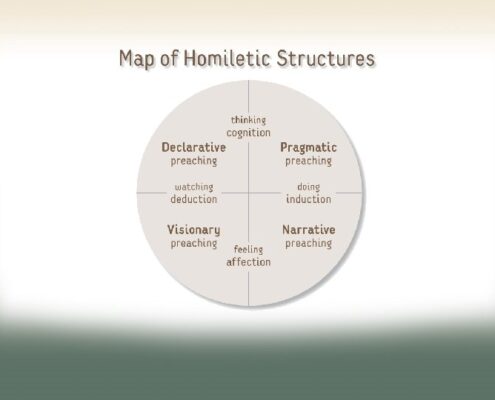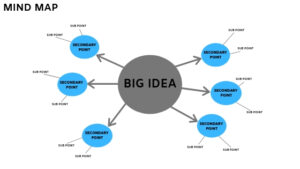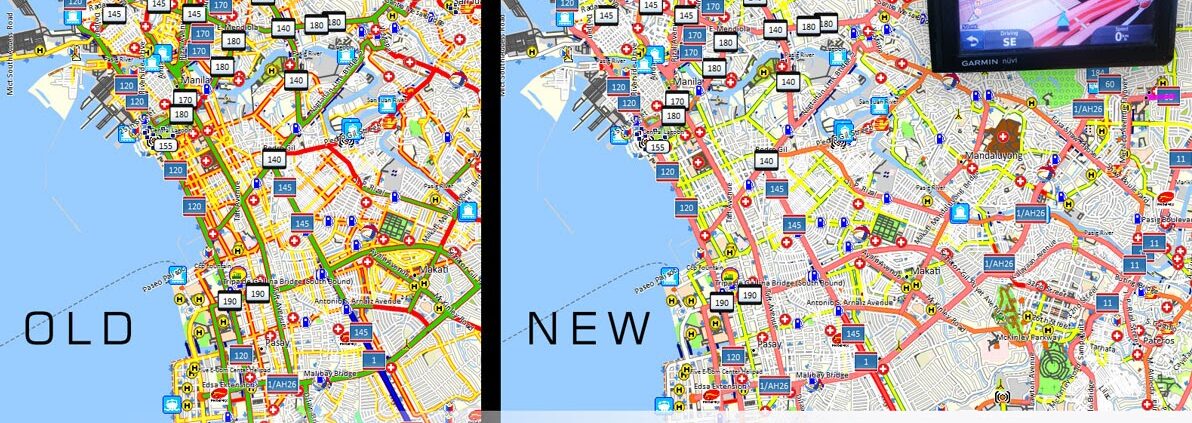Getting An Updated Map for Your Sermon
Getting An Updated Map for Your Sermon
In the next several posts we are going to look at the subject of getting an updated map for your sermon preparation and presentation.
The Need For An Updated Map

Several years ago my wife and I were traveling from our home in Michigan to St. Louis to visit our daughter’s family. It was winter, and storm warnings were out, but we figured that if we took our time, we’d get there eventually.
On the way, however, we came to the freeway that went to Chicago, and saw that traffic was at a standstill. We quickly got our map out of the glove compartment and looked for alternative routes, ones that would get us past the problems on the road. Unfortunately, our map was old, and it looked like there were few ways to get around the backed up mess.
Fortunately, there was an exit. We got off, and I went into a little restaurant. A server asked what I wanted, and I answered that I’d like to know if there was a way around the traffic problems. She pulled out an updated map and sketched the roads that I needed to follow to get past the problem. With much gratitude, we got on our way, and likely saved several hours of travel.
The Old Maps

Kenton Anderson
In his book, Choosing to Preach, author Kenton Anderson says this about getting an updated map for your sermon presentation:
It is time we had some new maps for preaching. The old maps were suitable in their day…Maybe the most well-worn map of the preaching landscape was written by that pioneer homiletic cartographer, John Albert Broadus. Broadus’s map describe the textual sermon, the topical sermon, the textual-topical sermon, and the expository sermon. While these categories may have served the preacher of the late nineteenth century, they are not sufficient to describe all of the territory explored by preachers today. (p. 128)
I have explored those various ways of approaching Scripture, in this blog, but let’s look at some other options to our map for the sermon. We’re going to consider some of the ways that Anderson develops in his book, and we’ll also explore examples of how these new maps might look in operation.
Updated Maps for Your Sermon
Here is an illustration of how Anderson looks at new maps:

Let’s consider some definitions here.
- Some sermons are high on thinking, or cognition. Preachers who use these maps don’t tell “fluffy” stories. Rather, they focus on the “facts”, and their sermons are full of declarative sentences.
- Another way of approaching a sermon is to seek to touch peoples’ emotions. These sermons will tend to use more illustrations and stories.
That’s a brief summary of what we’ll be exploring over the next posts. I didn’t define everything on his picture. We’ll do more of that later. I know that right now this might seem a little confusing, but I assure you it will all become clear as we consider these categories, and it will be beneficial to you as you think about your sermon preparation.

One sermon map style
In preparation, think about your sermon map. Most of us have a regular way we approach sermon making. My map tends to be as follow: I explore what a passage means for daily life (which puts me a bit more on the emotional response side of things); then I seek illustrations and stories that will fit in well with what I have learned; next, I seek an attention-getting introduction; and finally, I’ll look for a powerful conclusion.
Anderson’s book is helping me explore other options for a map. Join me in the next few posts as consider getting an updated map for your sermon preparation and presentation.



